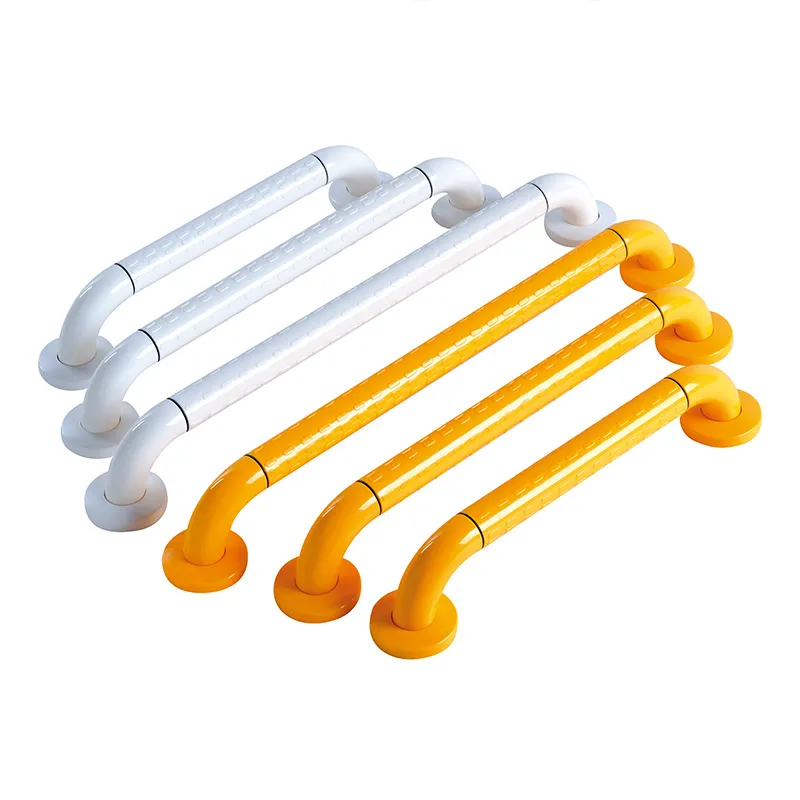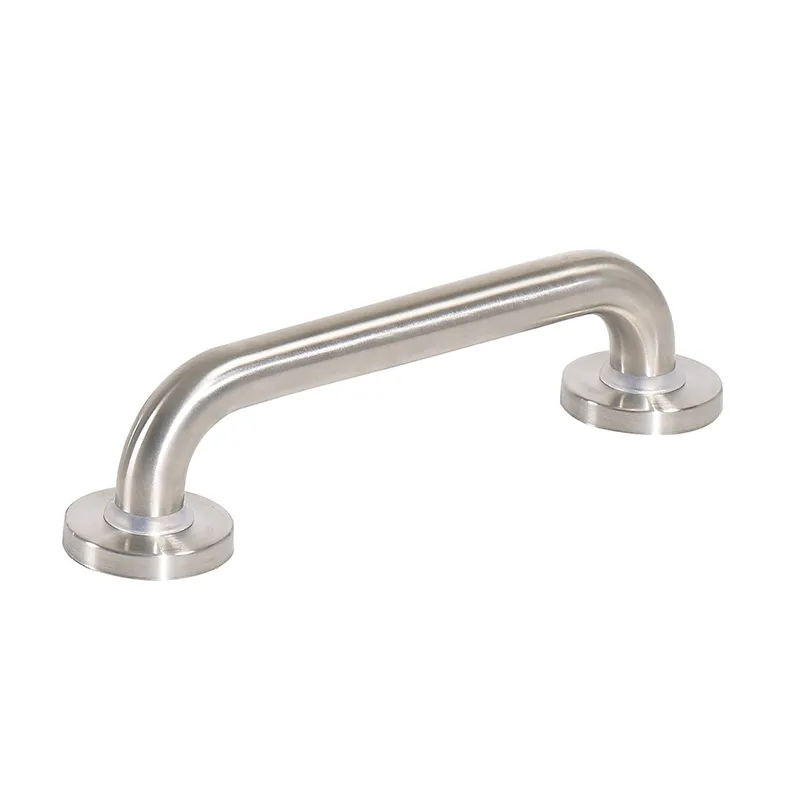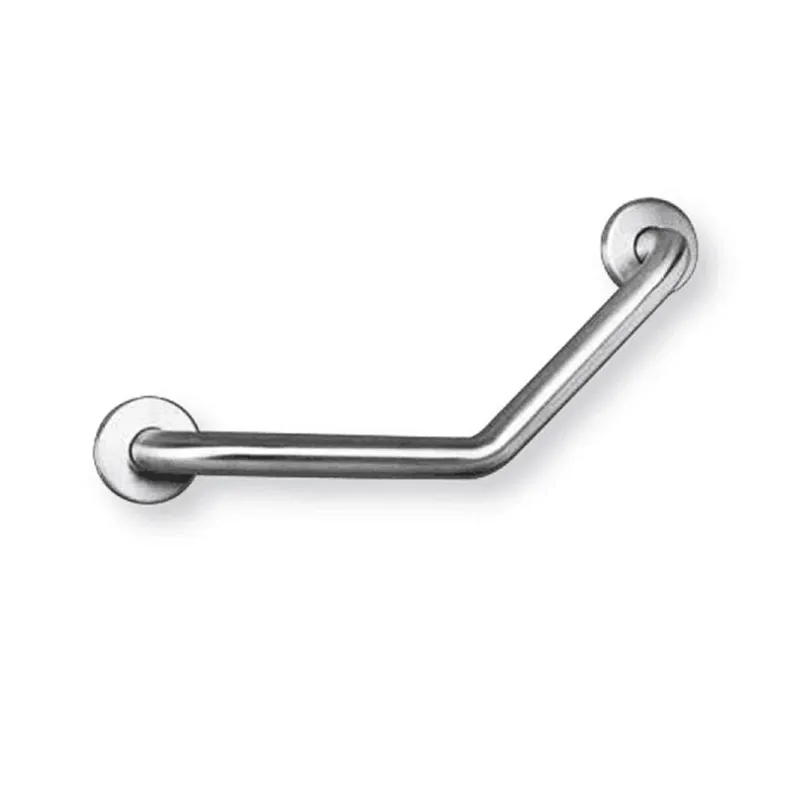
What is the optimal height of toilet handrails for people with disabilities?
2024-11-14 15:30
In modern society, providing convenient and safe living facilities for people with disabilities has become a universal social responsibility. Whether it is renovations in the home or barrier-free design in public places, the purpose is to help people with limited mobility live better and independently and reduce unnecessary dependence. As a basic facility in daily life, the toilet is a challenging environment for people with disabilities. In this process, the handrails behind the toilet (also called toilet handrails) play a key role.
So, why should handrails be installed behind the toilet for people with disabilities? And what should be the optimal installation height of these handrails? This article will elaborate on this issue from multiple angles.

What is the role of toilet handrails?
The original intention of the design of handrails is to provide users with additional support at critical moments to prevent the risk of falling or slipping, especially in some scenes where it is easy to lose balance, such as standing, turning around, or switching from sitting to standing. As an important auxiliary tool, the handrails behind the toilet not only provide physical support for people with disabilities, but also psychologically enhance their sense of security and self-confidence.
Support and stability
The handrails behind the toilet are mainly used to help people with limited mobility maintain their balance during the toilet process. People with disabilities often cannot control their bodies freely when sitting and standing up like ordinary people due to lack of limb control, insufficient muscle strength or joint problems. The installation of handrails can provide additional support, making them more stable when using the toilet and reducing the risk of falling due to instability.
For example, many elderly or disabled people are prone to losing balance during the toilet process due to weak leg muscles or poor balance when standing. Handrails can provide them with a fixed support point to help them complete the movements smoothly during the process of standing up and sitting down, reducing the possibility of falling.
Convenient transfer
For those who need to transfer from a wheelchair to a toilet, handrails are an indispensable tool. The handrails behind the toilet can provide them with a stable grip, allowing them to complete the transfer process from wheelchair to toilet more easily. Without handrails, the transfer action is very dangerous, and the user may cause accidents due to lack of strength or unstable center of gravity.
Sometimes, disabled people need not only individual support, but also multi-point support, such as the use of handrails on the left and right sides or the combination of handrails at the back to distribute the body weight more evenly. This can reduce the pressure on a certain limb or part, and reduce the risk of muscle fatigue and joint damage.
Improve independence
For disabled people or the elderly, being able to complete toilet activities independently is a manifestation of self-esteem and independence. In the absence of handrails, they may need to rely on others for help, which not only increases the inconvenience in life, but also may put a certain burden on their psychology. By installing handrails, they can complete the private activity of toileting more independently, reduce dependence on external help, and improve self-confidence and quality of life.

Where is the best installation position for toilet handrails?
When installing toilet handrails, not only its functionality should be considered, but also the rationality of the position. Only when installed in the right position can the handrail play its greatest role and help users complete the toilet process smoothly. Generally speaking, the handrails behind the toilet and the handrails next to the toilet are common designs, but the specific installation location and method need to be determined according to the actual needs of the user.
Handrails behind the toilet
Handrails installed behind the toilet can provide strong support for disabled people who need to stand up from a sitting position. When they stand up, they can hold the rear handrail to stabilize their body weight and prevent leaning back or standing unsteadily. For users who need to transfer, the handrails behind the toilet can also play an auxiliary role, giving them more grip points to ensure a smooth transfer process.
However, the installation of the rear handrail should take into full consideration the layout of the toilet and the user's physical ability. For example, if there is insufficient space behind the toilet or the distance between the back of the toilet and the wall is far, the actual use of the handrail may be limited. Therefore, when designing, ensure that the distance between the toilet and the handrail is moderate, and the handrail is easy to grasp and not too far or too low.
Handrails on the side of the toilet
In addition to the handrails behind the toilet, many designs also install handrails on both sides of the toilet. Side handrails can provide users with more support points, especially when transferring and sitting down, it can help users transfer part of their weight to the handrails and reduce pressure on their legs or waist.
The design of the double-sided handrail can enhance the overall stability and enable users to adjust their posture more freely when using the toilet. If the user needs to transfer from a wheelchair to the toilet, the double-sided handrail also provides more options and can make this action easier.
Other auxiliary handrails
In some special cases, in addition to the handrails behind and on the sides of the toilet, some other types of auxiliary handrails can be added. For example, a folding handrail can be installed next to the toilet and can be put down when needed and folded up when not in use to save space. This design is particularly practical in some bathrooms with relatively small spaces, which can meet the safety needs of users without taking up too much space.
What is the optimal height of toilet handrails?
The height of toilet handrails is a key factor in determining their ease of use and safety. When installing handrails, the height needs to be determined according to the height, physical condition and usage needs of the user to ensure that the handrail can provide them with support in the most appropriate position.
General recommended height
According to the barrier-free design standards of the Americans with Disabilities Act (ADA), the recommended installation height of toilet grab bars is generally 33 to 36 inches (about 84 to 91 cm), which is the distance from the ground to the top of the grab bar. This height is suitable for most disabled people and the elderly, and can provide effective support when they sit and stand.
However, this standard is not absolute, and the specific installation height should be adjusted according to actual conditions. For example, for shorter or taller users, the height of the grab bar may need to be adjusted lower or higher to ensure that they do not need to overstretch or bend when using it.
How to choose the right height
In order to choose the most suitable grab bar height for the user, it is usually recommended to do some simulation tests before installation. Users can try grab bars of different heights when using the toilet to see if they can easily grasp and maintain body balance. If users need to tiptoe when the grab bar height is too high, or bend over when the height is too low, it will increase their difficulty and risk. Therefore, the ideal grab bar height should allow users to easily grasp it in a natural standing or sitting posture without additional body adjustments.
Selection of adjustable handrails
In order to meet the needs of different users, there are also some height-adjustable handrails on the market. This type of handrail can be adjusted in height according to the needs of the user, which is very suitable for those with special needs or multiple people using the same bathroom. Adjustable handrails usually have a simple operating mechanism, and users can adjust them according to their needs to ensure that the handrail is always in the most suitable position.

What are the precautions for installing toilet handrails?
When installing toilet handrails, in addition to considering the position and height, you also need to pay attention to some other factors to ensure its safety and durability.
Material selection
The material of the handrail should have a certain degree of anti-slip and durability. Common materials include stainless steel, aluminum alloy, etc. The surface of the handrail is usually designed with an anti-slip texture to increase friction and prevent the user from slipping when grasping. Especially in a humid bathroom environment, the anti-slip function is particularly important.
Installation method
The handrail must be installed firmly and can withstand a certain amount of weight and tension. Whether it is installed on the wall or on the floor, high-strength fixing screws and mounting brackets are required to ensure that the handrail will not loosen or fall off during use. If the wall's load-bearing capacity is insufficient, it may be necessary to take strengthening measures, such as installing support plates, to ensure safety.
Regular inspection and maintenance
Toilet handrails may become worn or loose during long-term use, so they should be inspected and maintained regularly. Once the handrail is found to be loose or the surface is severely worn, it should be replaced or repaired in time to ensure that it is always in good working condition.









